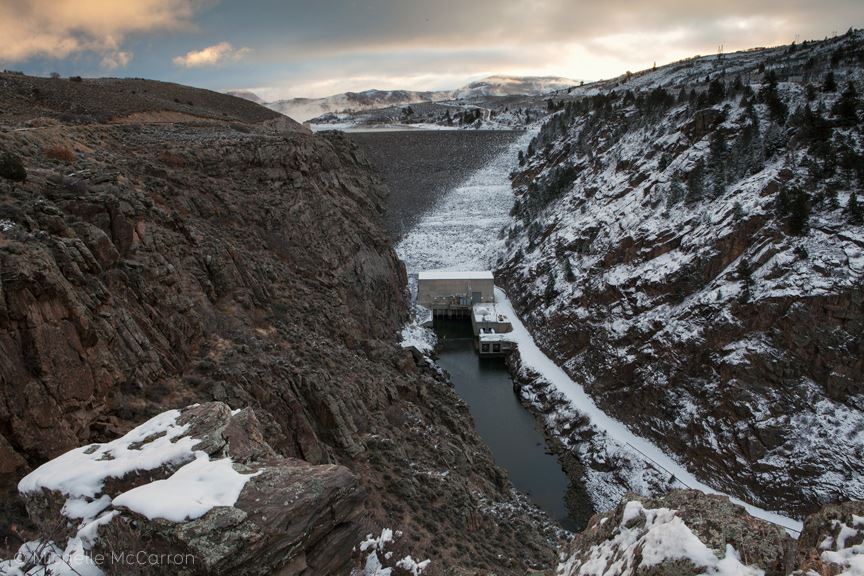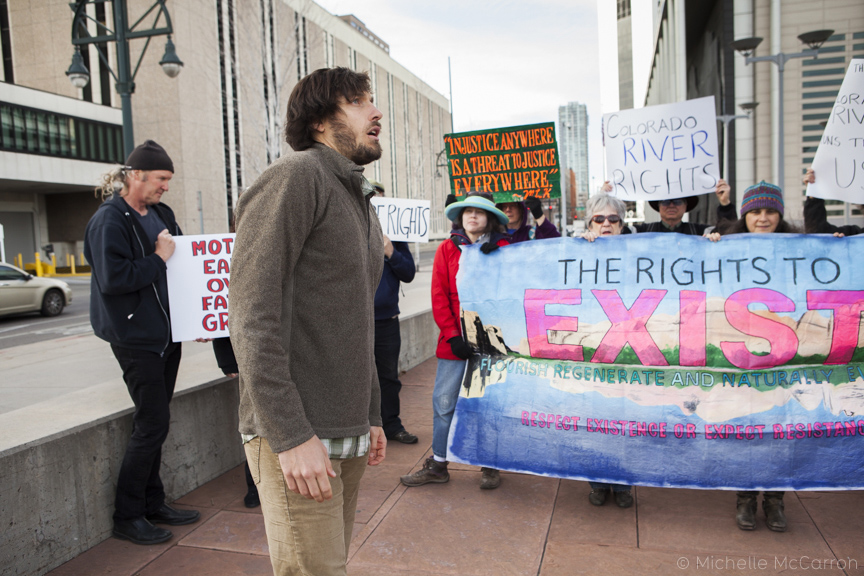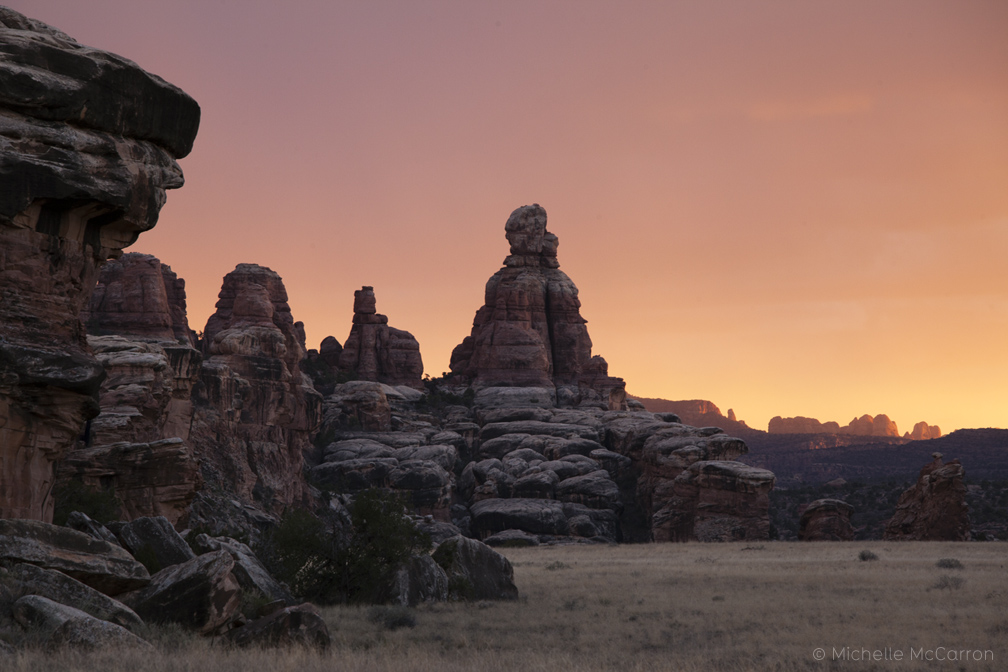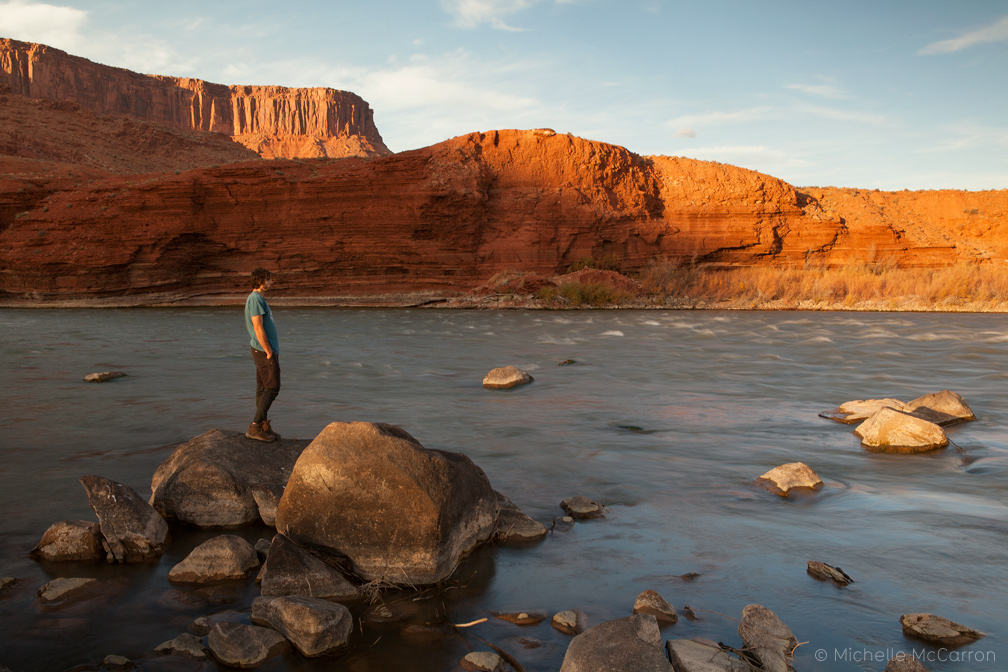
by Deep Green Resistance News Service | Nov 27, 2017 | Listening to the Land
Editor’s note: This is the latest installment from Will Falk as he follows the Colorado River from headwaters to delta, before heading to court to argue for the Colorado River to be recognized as having inherent rights. More details on the lawsuit are here. The index of dispatches is here.
by Will Falk / Deep Green Resistance Southwest Coalition
Thanksgiving brings me cognitive dissonance. I spent this one at my partner’s sister’s house in Midway, UT. I was certainly grateful for the rest after a month traveling with the Colorado River, for the great food, for the company, for my niece sharing the goings-on in her five-year old imagination, and for my spellbound two-year old nephew watching a video with me of Vaquita porpoises swimming while using his brand-new vocabulary to say “whoa” and “pretty cool.”
None of this can mask the horror Thanksgiving represents for many of this continent’s indigenous peoples or for the natural communities destroyed in the name of European “progress,” however. When I saw friendly cartoon turkeys smiling at me from the fringes of television screens showing football games, I also saw the extinct passenger pigeons that were more likely eaten at the first Thanksgiving than turkeys. When I saw the heaps of squash, sweet potatoes, and corn, I wondered if the Wampanoag regretted saving those strange, taciturn people they found freezing and starving near Plymouth Rock. When I saw the classic images of black-clad pilgrims clutching their blunderbuss muskets, I heard those same muskets spouting sparks, smoke, and lead while villages burned and children screamed.
I cannot claim to have always thought critically about Thanksgiving. I was born and raised in a white, middle-class, American Catholic family. Though my parents, fortunately, decided to have only two kids (I have a younger sister), my father is the second oldest of eight children and my mother is the second oldest of seven. My grandparents and my parents’ siblings were spread out across the country, but we always made an effort to spend Thanksgiving with family. As a child, Thanksgiving was, for me, simply a family gathering.
But, then I spent time in native communities, with open ears. I studied history. I refused to let comfortable fantasies anesthetize painful realities. In other words, I learned and I grew up.
I learned that Christopher Columbus’s first interactions with native peoples were poisoned with his intentions to enslave them. I learned about the holocaust Hernan Cortez and his conquistadors inflicted on the indigenous peoples of Mexico, about Lord Jeffrey Amherst and his delivery of small-pox infected blankets to the Delaware people, about the Trail of Tears, the carnage at Wounded Knee, and the brutality at Sand Creek.
I also learned about how much of the natural world has been destroyed. I learned that the United States has lost 95% of its old growth forests, that more than 75% of the topsoil that existed worldwide when Europeans first colonized North American is now gone, and that one-half of all species are currently threatened with extinction, primarily by industrial activity.
Yes, the arrival of Europeans in the Western Hemisphere was a disaster for both indigenous peoples and the land. It was also a disaster for the Colorado River. I’ve described the disaster in my previous dispatches: Dams prevent her from flowing to the sea. Climate change destroys the snowpack she regenerates with. Mercury, dangerously-high levels of selenium, and other carcinogens are pumped through her veins.
The Colorado River barely resembles who she was before European colonization. For me, it is as Arundhati Roy wrote, “Once you see it, you can’t unsee it. And once you’ve seen it, keeping quiet, saying nothing, becomes as political an act as speaking out. There’s no innocence. Either way, you’re accountable.”
Just like Thanksgiving comes with the reminders of horror, I’ll never be able to drive past a dam in the Colorado River Basin and ignore the highly endangered bonytail chub who can no longer visit most of their traditional spawning beds. I’ll never be able to read the billboards praising the peaches of Palisade, CO or the melons of Green River, UT without remembering dried up willow forests where the songs of nimble southwestern willow flycatchers have fallen silent. And, whenever I see the Colorado River, that blue ribbon twisting through rocky mountains and red rock canyons, I won’t be able to unsee the destruction I’ve seen for a month.
As I process what I’ve seen so far in my travels, I’m left with Roy’s brilliant words: We are no longer innocent and it is time to be accountable.
To repost this or other DGR original writings, please contact newsservice@deepgreenresistance.org

by Deep Green Resistance News Service | Nov 22, 2017 | Listening to the Land
Featured image by Michelle McCarron
Editor’s note: This is the latest installment from Will Falk as he follows the Colorado River from headwaters to delta, before heading to court to argue for the Colorado River to be recognized as having inherent rights. More details on the lawsuit are here. The index of dispatches is here.
by Will Falk / Deep Green Resistance Southwest Coalition
Water is life. But, water is also death. Water brings pleasant taste to the parched tongue, but water also brings stinging numbness to the warm blooded. Water taken through the esophagus brings hydration. Water taken through the lungs brings suffocation. Water may be disrespected for a time, but the longer the passage of water is hampered, the angrier water becomes. Water has a long memory and, where others forget, water carries pollutants and poisons for decades.
When I think about what it would mean to fully recognize the rights of the Colorado River to exist, flourish, regenerate, and naturally evolve, I know the river will demand a reckoning. I know this lyrically and I know this ecologically. Lyrically, the river is full of a righteous rage. Ecologically, too many humans have come to depend on the exploitation of the river and the rest of the natural world. The balance that must be achieved will come with profound pain. Humans will die, their lifestyles will be dramatically changed, and those who require the gifts of civilization will see those gifts taken.
The black waters of the dammed Blue and Colorado Rivers stroked the Dillon Reservoir walls with their dark thoughts and taught me these lessons. It was several hours after sunset and well below freezing. A certain morbidity rose from the artificial lake and crystallized to hang on the air. Somewhere out of sight, but perilously near, I could feel the stirrings of anger. I sensed the anger was slow to swell, but irresistible when fully aroused. I was mesmerized by the stars spilling over ripples and by the crescent moon’s silver threads, two nights from new, dancing across the water. In the town of Dillon below, harsh electric lights sparked and crackled with a troubled tension.
The images came unbidden. The first faint crevice appeared in the earth-filled wall. Water hissed as it pushed through. Rivulets appeared as tears rolling down the dam’s face. Then, a series of sharp cracks rang out like the reports of heavy ordnance announcing the beginning of battle. Earth and stone blasted away to fall into the valley. Water rushed into Dillon. Poles holding power lines snapped like toothpicks. Chunks of asphalt were ripped up. Automobiles flipped and tumbled like pebbles on a creek bed. Factory outlet stores, gas stations, and multi-story hotels were washed away.
The white torrents that cascaded from the broken dam were flecked with joy. The waters retook the Blue River’s original path. The waters from the Colorado, knowing they would never rejoin their mother, were gladly adopted by the Blue. It was all over in a matter of minutes. This sudden demonstration of natural power passed and a quiet peace settled where Dillon once stood. The peace wasn’t without pain. Human bodies floated facedown among the wreckage. The water regretted the deaths, but knew the human bodies would be broken down and used to heal the wounds humans had created.
As the vividness of the images faded, I was left with the echo of a warning. I recalled all the dams in the Colorado River Basin, all dams everywhere, and I prayed that a peace could be made with the dammed waters of the world.

Image by Michelle McCarron

by Deep Green Resistance News Service | Nov 17, 2017 | Listening to the Land
Featured image by Michelle McCarron
Editor’s note: This is the latest installment from Will Falk as he follows the Colorado River from headwaters to delta, before heading to court to argue for the Colorado River to be recognized as having inherent rights. More details on the lawsuit are here. The index of dispatches is here.
by Will Falk / Deep Green Resistance Southwest Coalition
Tuesday, I stood on the steps of the Alfred A. Arraj Federal Courthouse in Denver before a crowd gathered to hear my thoughts as one of the “next friends” in our lawsuit seeking personhood for the Colorado River. We were supposed to have a hearing, but the court postponed it at the last minute. With so many of us traveling to Denver from across the Colorado River Basin, we decided to proceed with the press conference anyway.
It wasn’t the anxiety public speaking can induce that produced the tremor in my hand, the acid in my gut, or the quiver in my voice. It was a simple question, unresolved: Is it dishonest to speak of hope when you feel none?
Tuesday also marked the beginning of my fourth week traveling with the Colorado River. For going on four weeks now, I’ve pestered her with two questions. Who are you? And, what do you need?
I began my speech explaining that I arrived there after three weeks with the river. I recounted the violence I witnessed in La Poudre Pass where the Grand Ditch lies in wait to steal the Colorado River’s water moments after the union of snowpack, sunshine, and gravity gives her birth. I reported the energy expended pumping the river’s water uphill from Lake Granby reservoir to Shadow Mountain reservoir and then into Grand Lake before the Alva B. Adams tunnel drags the water 13 miles across the Continental Divide and beneath Rocky Mountain National Park to meet Front Range demands. I described the view from Palisade, CO where peaches are grown in the middle of the desert and criss-crossing canals, seen from the mountains, appear as vast, mechanical tattoos sewn into the flesh of the land.
I paused at this point, knowing that, after presenting my audience with a series of distressing images, I was supposed to leave them with a positive message. While I reflected on what I had seen and said, however, I felt the river’s truth spill over me. For three weeks, I thought I had been listening to the Colorado River. But, she isn’t a river anymore. Not truly. She has been so diverted and dammed, experienced so much extraction and exploitation, that the best way to describe her is not as a river, but as an industrial project, as a series of tunnels, concrete channels, and canals, as another tortured corpse stretched across civilization’s rack.
While this realization washed over me, I considered our lawsuit and the rights of nature. I wondered if it is possible to grant rights to a ghost. I questioned whether the Colorado River could ever recover from what’s been done to her.
Grief threatened to overwhelm me, to silence me in despair. If I had been by myself, caught in the flow of these emotions in private, I would have wept. But, the presence of the crowd steadied me and as the despair trickled away, rage rushed in to take its place. That rage burned with the heat of the desert sun from the Colorado’s face and I learned that ghost or not, she who haunts is not dead.
To repost this or other DGR original writings, please contact newsservice@deepgreenresistance.org

by Deep Green Resistance News Service | Nov 9, 2017 | Listening to the Land
Featured image by Michelle McCarron
Editor’s note: This is the latest installment from Will Falk as he follows the Colorado River from headwaters to delta, before heading to court to argue for the Colorado River to be recognized as having inherent rights. More details on the lawsuit are here. The index of dispatches is here.
by Will Falk / Deep Green Resistance Southwest Coalition
In most places, Life protects the modern human’s fragile sense of self-importance by veiling the weight of time in the soft accumulation of soil, by disguising the vastness of the universe in the reassuring consistency of an undisturbed horizon, and by salving existential angst with a diversity of nonhuman companions. There are places, however, where Life refuses to disguise herself and human self-importance disintegrates.
The red rock deserts and canyon lands of southeastern Utah, where we followed the Colorado River, are some of these places. The reality of time, frozen and piled where the land was rent into mesas and plateaus, crashes down on human consciousness while human bones shiver in the shadows and foreshadows whispered by stones, boulders and the bones of the land.
She beckoned us south through these lands. She fled through the sheer red rock walls that she sculpted as monuments to her power. She paused, at times, in warm pools, to let the colors of stone reflect from her face and to rejoice in her own beauty. To interpret her work as vanity is to misunderstand; only her creations are worthy of her celebration. The waters flowing through our bodies coursed against our skin and tugged on our veins yearning to mingle with their kin. We ached with regret for the moment life would necessarily drag us from her banks.
Mesmerized and seeking the Confluence of the Green and Colorado Rivers, we got lost in Canyonlands National Park. We never got the photograph of the Confluence we sought. At first, we were angry at ourselves. We ended up hiking close to fourteen miles in seven hours, up canyon walls abruptly rising six or seven hundred feet, through a rainstorm, and across canyon floors covered in several inches of loose sand which required muscles we forgot we had. We thought that we did it all for nothing. Worst of all, feeling a responsibility to tell the Colorado River’s story, we thought that we let the river down.
But, the deeper I think about it, the clearer an image of the river, waving through the orange sunshine of a desert dusk, becomes. She seems to smile with the compassionate gleam of elder wisdom. “You should have known,” she says. And, now I do: We did not simply miss the cairns, lose the trail, and end up five miles south of the Confluence and six miles from our cars, after sunset. No, we lost more than the trail. We lost our self-importance. And, only humility remained.
To repost this or other DGR original writings, please contact newsservice@deepgreenresistance.org

by Deep Green Resistance News Service | Nov 5, 2017 | Listening to the Land
Featured image by Michelle McCarron
Editor’s note: This is the latest installment from Will Falk as he follows the Colorado River from headwaters to delta, before heading to court to argue for the Colorado River to be recognized as having inherent rights. More details on the lawsuit are here. The index of dispatches is here.
by Will Falk / Deep Green Resistance Southwest Coalition
Hear the white crash of her torrents on the boulders she drags through the desert, feel the unyielding red rock she pushes through, lose your balance in the impatience of her swift streams, and you’ll know: The Colorado River needs to provide her waters and yearns for her home in the sea.
I spent several hours in silence with the Colorado River last night listening to her speak of her desires while I pondered our lawsuit that seeks rights for the river. I saw the silver sparks of minnows playing under brown stones. I watched the wind shower gray pools with gold cottonwood leaves. I was washed away in the vertigo caused by the river’s speed conflicting with the primordial stillness of canyon walls. I did not hear a judge’s gavel, evidentiary proceedings, or opposing counsel’s objections. In fact, I neither saw nor heard anything human, save my hands cupped to gather water and the soft beat of blood over my eardrums.
I wondered if the arguments tossed around the small confines of a courtroom or the abstract rights possessing little meaning beyond that granted them by the human mind could give the river what she needs. The river’s needs are physical, concrete, and real. She needs dams to be removed, she needs annual snowfall to return to pre-industrial levels, and she needs poisonous chemicals to be filtered out of her. The question becomes: Can our lawsuit give the river what she needs?
Our lawsuit asks a judge to rule that the Colorado River is a person capable of possessing the rights to exist, flourish, regenerate, and naturally evolve. Personhood gives the person possessing a right the ability to ask a court to enforce the right. A court enforces a right by commanding someone to stop an activity infringing upon a person’s right or by commanding someone to pay the person whose rights were infringed upon. A court ensures a command is followed by calling upon the police (men and women with guns) to compel compliance with a court order.
It is important to understand that filing a lawsuit is nothing more than an attempt to persuade a judge to use force, or the threat of force, to compel someone to act in a certain way. Our Colorado River lawsuit is an attempt to persuade a federal judge to order the State of Colorado to stop activities and projects that violate the river’s rights to exist, flourish, regenerate, and naturally evolve.
If our lawsuit succeeded, and the State of Colorado’s destructive activities were stopped, then, yes, the lawsuit would help to give the Colorado River what she needs. But, the closer our first hearing on November 14 gets, the more anxious I become. My anxiety is rooted in the fact that we do not have control over what happens in the case. Not truly. The lawsuit leaves it up to a judge who spends most of her time behind the walls and under the roof of a courthouse, who most likely lacks the time to sit humbly at the river’s banks to ask her what she needs.
This anxiety is nothing new. It is an anxiety that has become all too familiar to the environmental movement. We continue to lose, the natural world continues to be murdered, because the vast majority of our efforts are spent trying to convince someone else to do the right thing. We can continue to ask someone else to protect those we love, or we can protect them ourselves. More than anything else, the Colorado River needs dams to fall and her waters replenished. The good news is: a court order isn’t the only way a dam falls.
To repost this or other DGR original writings, please contact newsservice@deepgreenresistance.org






